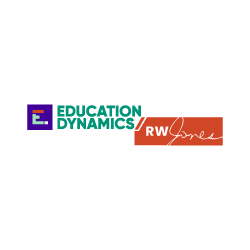With declining revenues and an increased number of adult learners and non-traditional students, higher ed institutions are refashioning themselves for the perceived cost and ancillary benefits of a greater reliance on online learning, digital instructional materials and online educational resources (OERs).
However, Dr. Naomi Baron, a professor of linguistics at American University, asserts the move away from print materials could be detrimental to student learning, and may go against many student’s own preferences for how to learn; she said her research indicates 92% of student respondents said they learned better when using print.
“We know if you ask students, if cost were not an issue, what would you choose for reading, that the significant majority would say print,” she said. “What this means to me is we have an interesting and problematic disconnect between what students are feeling and what school systems and universities are encouraging.”
Baron’s research focuses on how technology can impact reading, and her survey included more than 400 students at universities throughout the world. She said many institutions (as well as K-12 districts) were inclined to move away from print materials due to cost, but there was not adequate information on how digital-only learning, in terms of what a student learns in what subject matter and how they retain it, may affect a student’s educational outcomes.
Baron has long written about the positive aspects students attribute to print over digital reading; students said that they often re-read print materials, gleaning more information than they would from simply kimming the material. Students also reported that they retain information better when learning from print materials as opposed to digital reading. Baron said that too many educators and administrators operate under the assumption that if they offer online options, the reading material must be online as well. Cost has been a primary motivator, as a push for affordability takes over at the state and federal levels.
“This can be a real challenge. They say we have to make this affordable,” she said. “There is an assumption that ‘this is what students want, and if we want to show them we’re not troglodytes, we should do things differently.’”
Baron noted there is increased pressure for higher ed institutions to make library materials accessible online, but copyright law does not allow for colleges and universities to put more than a single chapter of a book online. The move towards digital has led to fewer educators assigning complete books for students to read, and a greater emphasis on single chapters or articles pertaining to a topic. College libraries have also worked to digitize many of their materials for virtual use, and Baron said institutions could understandably find it necessary if they have students enrolled across the world, or a high number of adult learners who may not be able to access materials on campus. Many school libraries are increasingly seeing their spaces transform with increased digitization; some institutions, like North Carolina State University, are incorporating makerspaces and other innovation spaces into their libraries to keep them oft-used by students.
Baron, who has been working with Paper and Packaging Board on a new initiative to encourage students to read at least 15 pages per day, said educators and administrators could begin to realize the positive benefits of including some print resources in classroom instruction by listening to the preferences of students, as well as a self-assessment of what educators hope students learn in the classroom and how such learning could best be achieved. Some attributes of classroom instruction, like quizzes, may be more appropriate with digital tools and techniques, she said. However material like an analysis of European history with a detailed argument, or to trace the complexities of an acclaimed novel, may be better suited for print materials.
“What this means is the challenge for education is to actually confront the question of what’s best learned and how, and we haven’t done it,” she said.
There are some indications that faculty reticence to replacing print materials with OER or other digital materials may slow the progression of digital instructional materials in the classroom. A survey by the Independent College Bookstore Association, found that less than 50% of faculty respondents agreed that digital materials were inherently better than print, and that students preferred these materials over print. Baron also said some of the most positive testimonials for the tactile benefits of reading a book came from young learners between the ages of 18 and 26.
“‘When I’ve read something,” Baron said she had heard from younger respondents, “‘I can put it on my shelf and say that’s a part of who I am now.”















